The purchase of a new boat is a major event in any owner's boating life. In the lead-up to the moment where the contract is inked, you'll have deliberated over many brochures, watched a hundred videos, been to countless boat shows, consulted with friends, pored over options lists, and negotiated with a shipyard or their local dealer. And then one day your new boat will emerge from the yard, ready for you to fulfill all those adventures you spent so long planning.

Passing the Danish coast, a gorgeous new Nimbus 405 Coupe speeds south in perfect conditions
Now, what is the best way to get your new toy from the shipyard back to her home berth?
The answer to this will depend on many factors—distance, cost, and time being the most obvious. Transporting a boat by road, or by sea, or on her own keel has been well covered (see “How to Transport Your Boat Four Different Ways”) so to find out what the alternative actually feels like, we joined the owner of a brand new Nimbus 405 Coupe who chose to collect his new steed from the yard in Sweden and drive it back to the UK himself.

Testing systems at the Nimbus commissioning facility in Långedrag, Sweden, before getting underway.
The odyssey began at the Nimbus commissioning facility in Långedrag, just 5 miles from Gothenburg, on the edge of the Swedish archipelago. After a thorough handover with the UK agent, who flew out to meet us, a naming ceremony was conducted and, under clear blue skies, we headed off. What followed was a near 1,000 mile epic adventure through seven countries, firstly across the Kattegat to Aarhus in Denmark, then south under the famous Middelfart bridges, and on to Laboe in Germany.
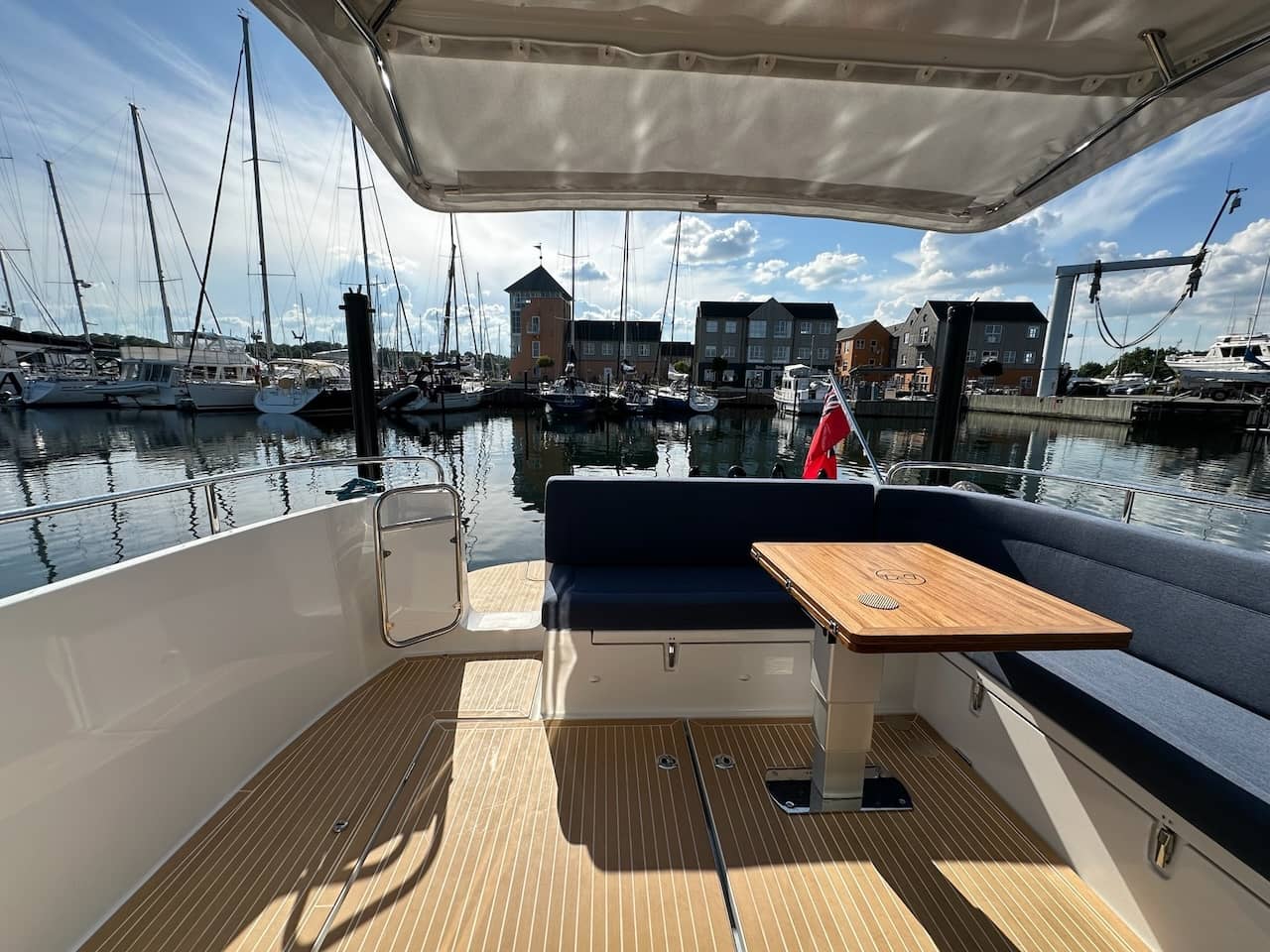
The first stop after crossing the Kattegat was Marselisborg, near Aarhus in Denmark.
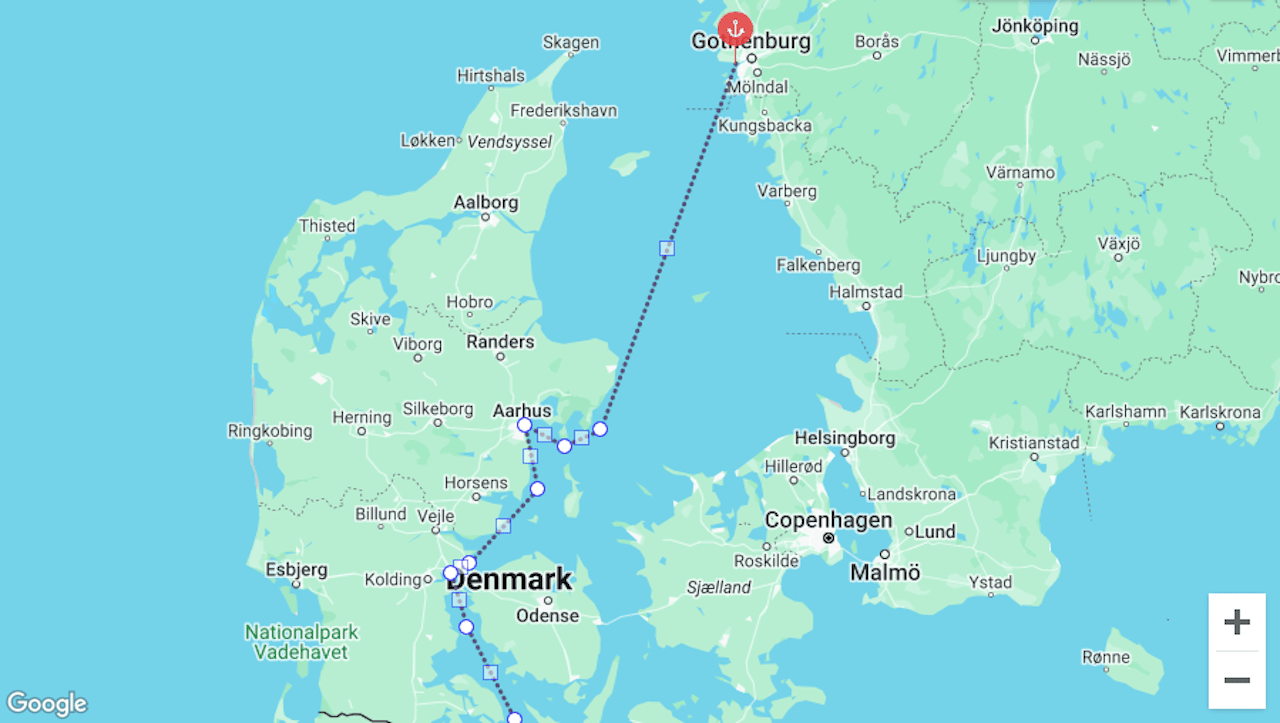
Passage planning #1. Our delivery began near Gothenburg, passing Denmark on the way south towards Germany and the Kiel Canal.
From Laboe, we joined the Kiel Canal alongside tankers, superyachts, and huge ships stacked with turbine blades. The canal is 54 miles long, and although it is possible to transit it in a day, we opted for the tranquil stopover at Rendsburg, as an early start the following morning would put us through the Brunsbüttel lock and in to the Elbe when the tidal conditions were favorable.
Once past Cuxhaven, we experienced less-than-tranquil conditions across the top of the Friesan Islands, so were relieved to drop down into Delfzijl as the sun began to set that evening, ready to head into the Dutch canal system after a great night's sleep.
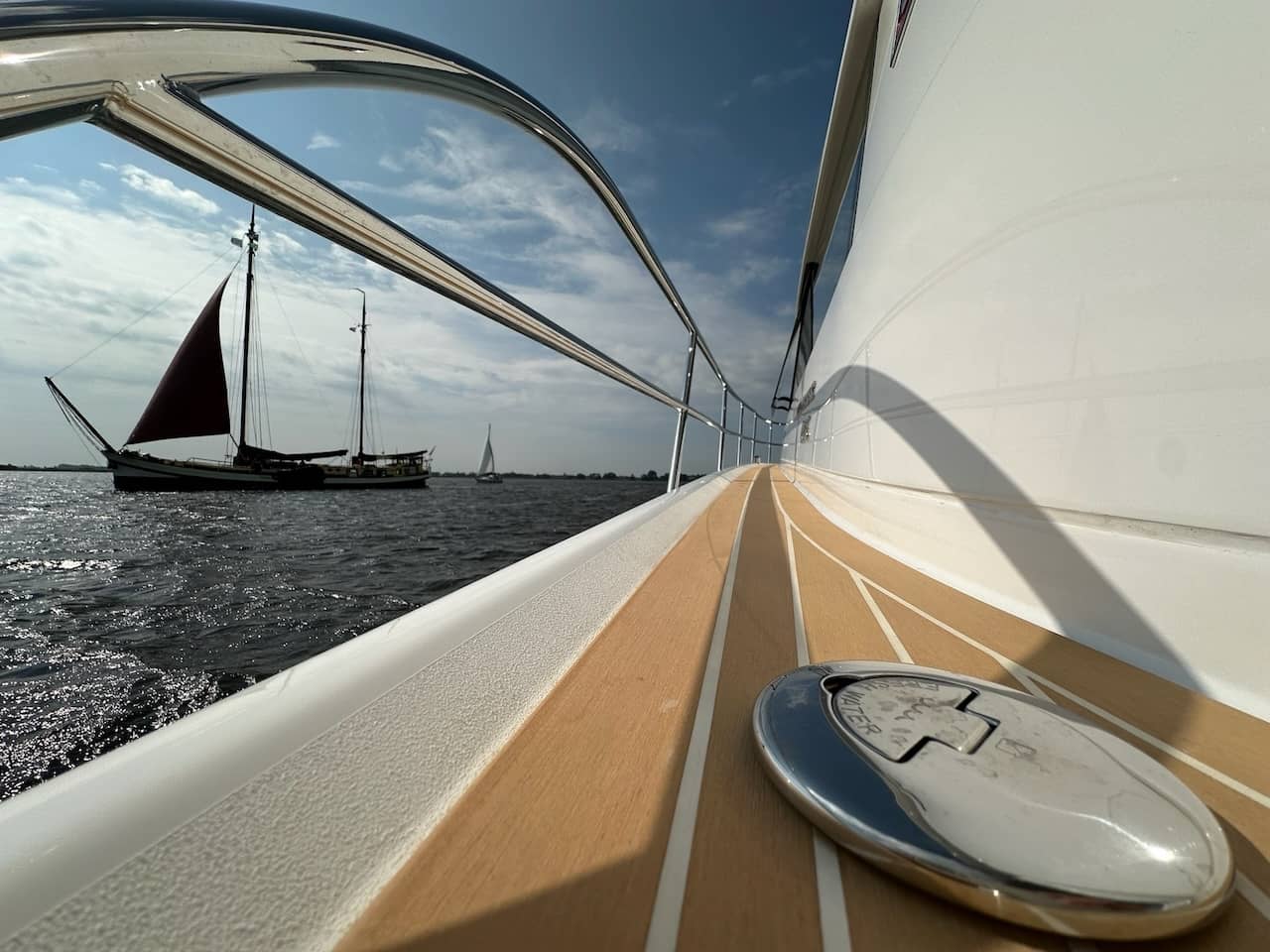
Typical Dutch traffic in the Princess Margriet Canal, near Gronigen
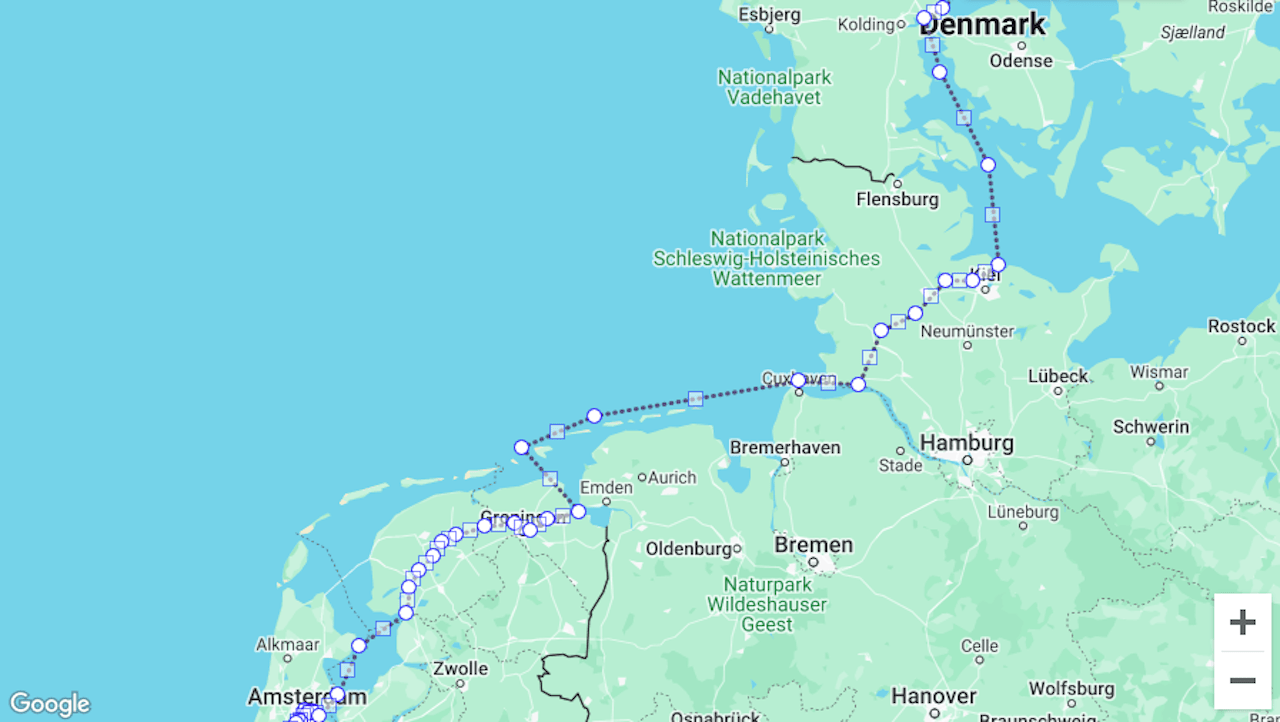
Passage planning #2. After the Kiel Canal, our route took us out into the North Sea and past the Friesan Islands, before fully entering the top of the Dutch Canal system.
Motoring at 6 knots has its distinct pleasures, so as windmills, bridges, and locks began to drift by at an elegant pace, so we became at ease with the steady rhythm of the crew work required—fenders up, fenders down, fenders in, fenders out, lines in, lines out, antenna off, antenna on again. We even went over one of the world's only two naviducts—an aqueduct that crosses a motorway!
Miles and miles of tranquil scenery eventually gave way to the delightful waterfront network of Amsterdam's rivers and canals. The architecture that passed by us in this famous capital city was simply stunning. Venice perhaps has a similar feel to it, but what the Venetians don’t have is a lock keeper on a bicycle who follows you through the canal network to open each bridge as you get to it! It's all rather charming, and very unique. We loved it.

Canal side in Amsterdam.
Once out of Amsterdam, we continued south through Aalsmeer, Leimuiden, Alphen aan den Rijn, Gouda, and Dortrecht. All the way, owners of beautifully manicured properties sat in their waterfront gardens watching us, watching them, watching us. Finally, after what felt like weeks in isolated magnificence, we cleared EU customs in Vlissingen, motored past Nieuwpoort, Dunkirk and Calais, struck our sixth courtesy flag, and wriggled across the shipping lanes of the English Channel.
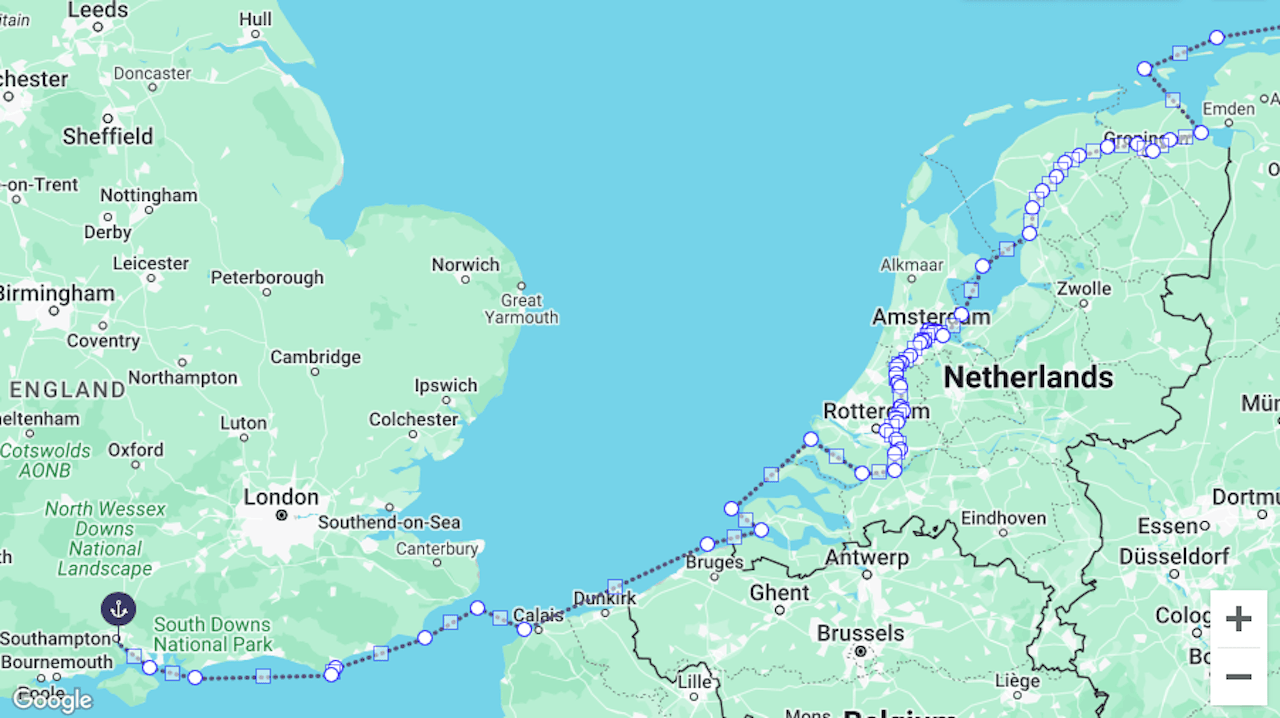
Passage planning #3. Finally, the voyage emerged on the North Sea west of Rotterdam, down the coast to Belgium and France before crossing to the southeastern corner of the UK. Overall, the route covered 873 nautical miles in 70 hours of motoring, including 63 bridges, 17 locks, 7 countries and 1 naviduct.
The Solent beckoned, and after the rigours of the Looe Channel, we began seeing landmarks much more familiar to us—the chalk cliffs of the eastern end of the Isle of Wight, Martello Towers, yellow racing marks, and the South Cardinal buoy at the bottom of the Hamble River. We were home.
Here’s what we learned about delivering a new boat ourselves, rather than having it delivered over the road.
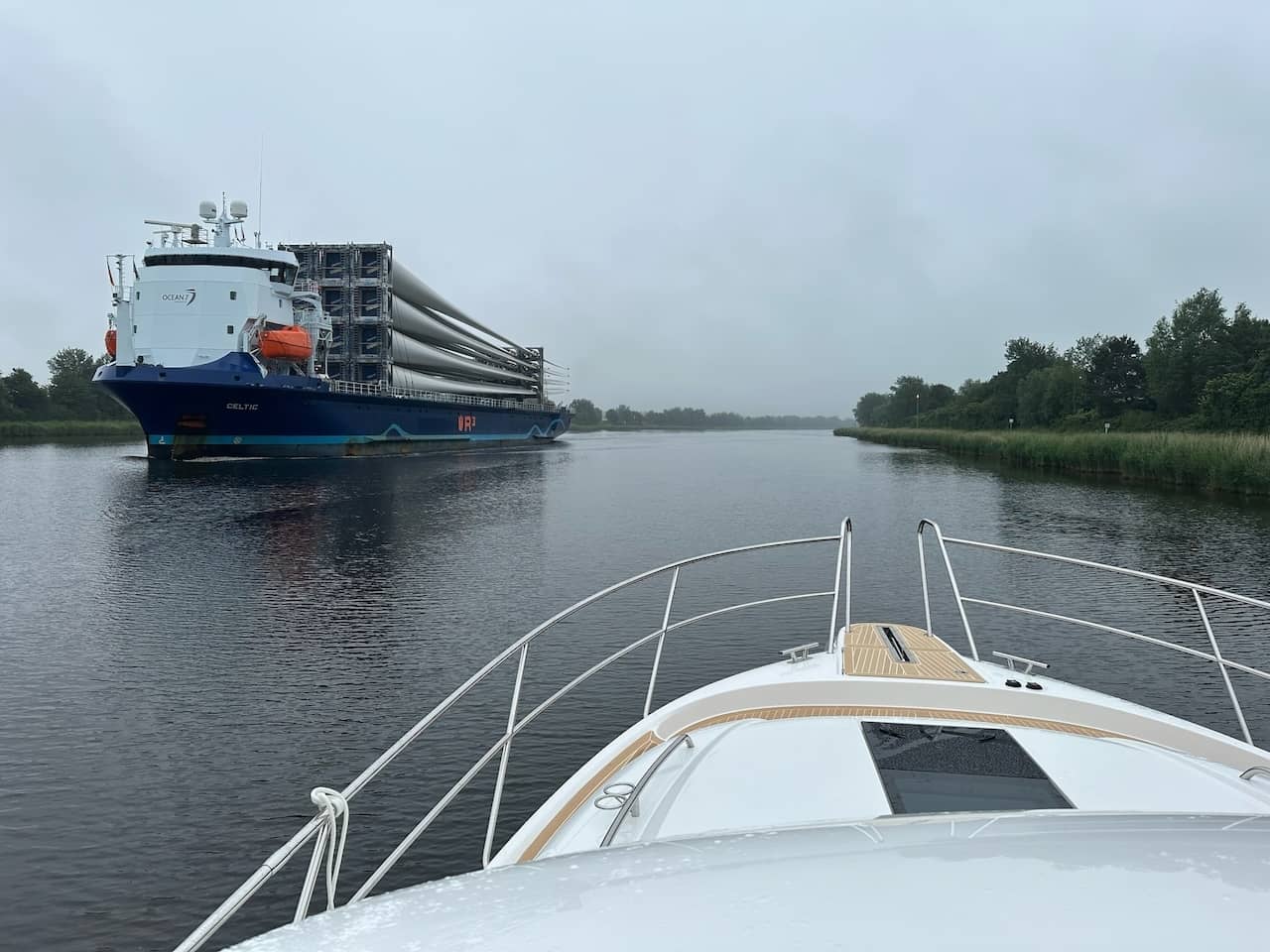
The canals in Northern Europe hold no end of surprises, such as this ship stacked high with windmill blades.
It’s an Experience Like No Other
Very few people undertake a delivery like this, yet it presents a glorious melange of stunning views, unique stop-offs, national cliches, challenging navigation, and some very interesting restaurants! Had the boat come home by road, we would not have experienced any of those things, and it is surely one of the great joys of boating to have the pilothouse view change each day. It certainly did for us, so the considerable photo library we now hold will remind us of untold adventures and memories shared. I suspect we’ll be flicking through it a lot in the winter months. What surprised us was the enormous sense of achievement we felt entering the Solent, knowing that we had brought a new boat all the way from the yard to her home berth, ourselves. Quite a moment.
You’ll Get to Know Your Boat
After nine days on board and close to 1,000 miles covered, there is relatively little we do not know about the Nimbus 405 Coupe. We know how best to tie her up in a wide variety of conditions, how she handles in rough seas and calm, what cupboards will fit what size box of cereal, how much water we use each day, where the odd squeak comes from, how all the seacocks work, what to look for on our daily engine checks, where best to stow things, how the holding tank operates, and what all the buttons on the dashboard do. The owner's boat-handling skills are now superb, and there is not much he does not now know about locks and bridges! So there is no doubt that a long trip like this fast-forwards you into everything you need to know about one's new vessel, leaving you free to enjoy the boating season ahead on the basis of rock-solid confidence in its capabilities. That knowledge—that security—is hard to put a price on.
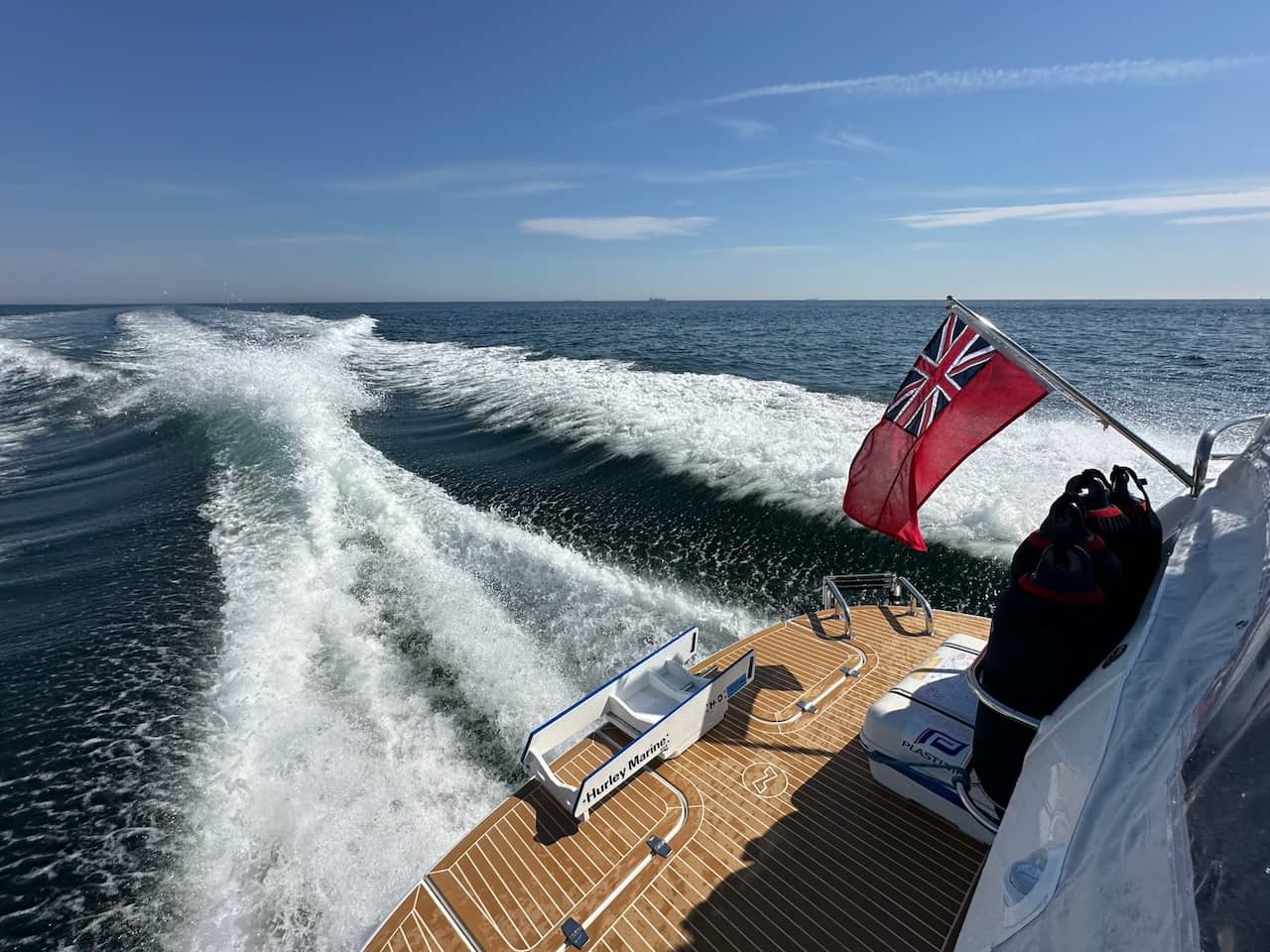
After nine days on board and close to 1,000 miles covered, the owner and crew have learned the Nimbus 405 Coupe from the inside out.
Know the Brand You Bought Into
To visit the home of a brand is to understand it. In our case, the senior management team of Nimbus took us out to an island in the Swedish archipelago and immersed us in the essence of the brand, its history, its core values, and the people who make it happen today. Cruising back to their commissioning facility after lunch that afternoon helped us to understand why they build the boats they do—that is much harder to achieve on a boat show stand.
Speed Up Warranty Issues
New boats often need things fixed. Fact. However, new boats that are not used much in their first few months may not reveal issues until long after any warranty period has passed. This can cause you (and your dealer) unnecessary angst, so discovering such issues early makes for a much better ownership experience. In the case of this particular Nimbus, the list was short, and the dealer was able to get it all done in one go.
Five Things to Know in Planning Your Voyage
- Don’t be too proud to think you can do it all on your own—take help! Most of the places you will visit en route will be new to you, so having an experienced hand on board will simplify potential tight situations.
- Delegate a few of the tasks you might ordinarily do yourself. Agree some of those in advance, to save you from having to worry unnecessarily in the heat of the moment.
- Lots of advance reading on the navigation, local customs, and places to stop will pay dividends. We read a lot beforehand and bought all the right books, but we could easily have done more and probably should have. Be prepared to be flexible—plans change, but research done ahead of time is rarely wasted.
- Prior to your delivery, spend time aboard an identical boat at a boat show or at your local dealer. If there is no boat available, ask the dealer if he could put you in touch with an owner who has one.
- You may not be able to transport big items like your dinghy or liferaft out to the yard ahead of the delivery date, so arrange to rent one if you are going to be offshore for any period of time. The reassurance is invaluable. Add to that more tools than you think you need, and big fenders if you plan to go through as many locks as we did! You’ll also need bedding, and all the other things that you took off your own boat at the end of last season. As such, consider sending an “advance party” by road ahead of your arrival, if feasible.
So, was it worth it?
Absolutely yes. So don’t be put off by distance, time or logistics. They are all surmountable. Indeed, we know of many owners who have undertaken much longer delivery trips than ours. This is particularly the case with sailing yachts, that often cross oceans on their own bottom as part of the ownership journey. As we proved, doing so can be part of the appeal of having a boat built by a builder far from you.